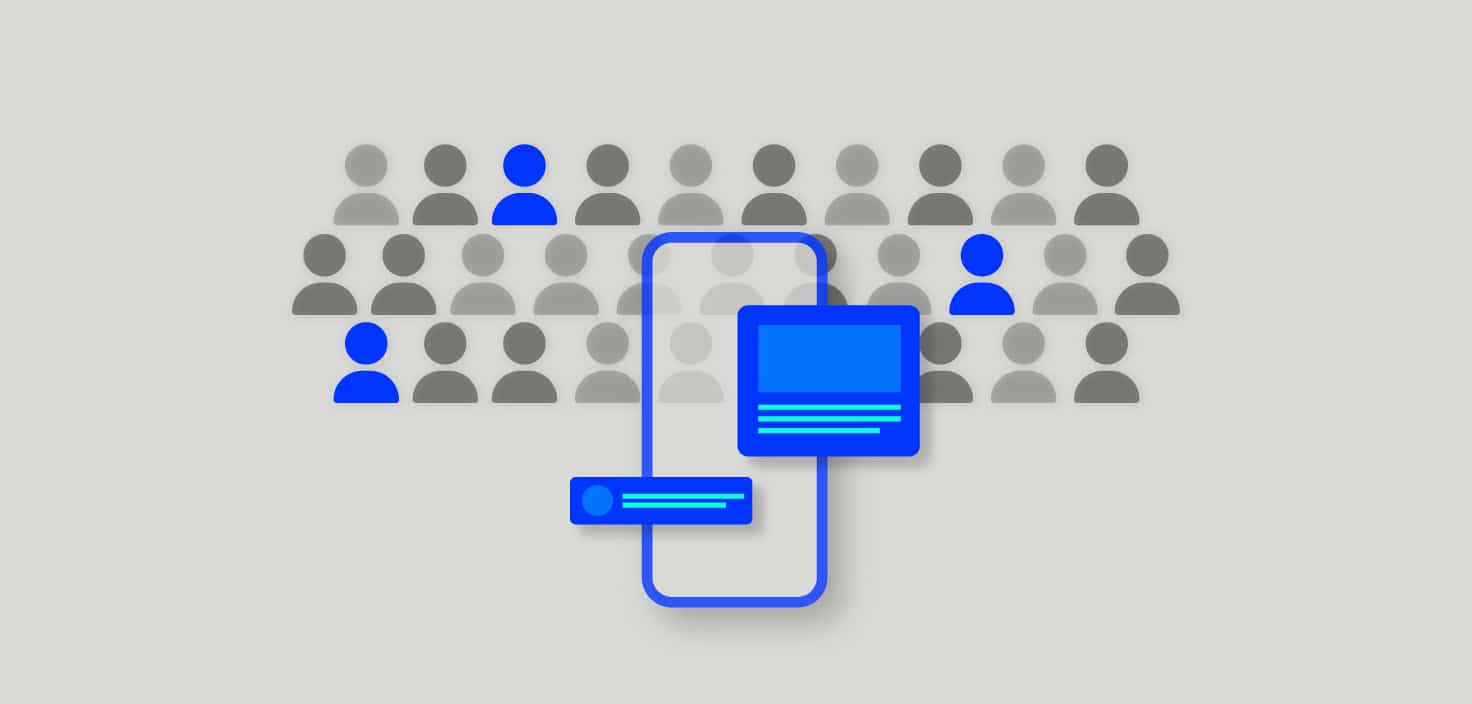Personalizing Banking Offers with Behavioral Segmentation Strategies
- Reading Time: 9 minutes
In today’s highly competitive digital financial landscape, understanding and anticipating customer needs is more critical than ever. Traditional segmentation methods, which primarily rely on demographic and geographic data, have become insufficient in capturing the complexity of customer behavior. Digital behavioral segmentation presents a more sophisticated approach by categorizing customers based on their online actions and interactions.
By analyzing digital footprints—such as online spending patterns, mobile app engagement, and product usage—banks can unlock deeper insights into customer behavior. This enables the creation of personalized digital offerings and tailored experiences that resonate with each individual, enhancing customer satisfaction and loyalty.
What is The Art of Behavioral Segmentation in Banking?
Behavioral segmentation in banking refers to the process of dividing customers into segments based on their behavior patterns when interacting with a particular financial institution or website. This type of segmentation goes beyond traditional demographic and geographic segmentation methods by leveraging customer data to gain insights into customer behavior.
It allows banks to understand how customers interact with their business, including factors such as their attitude towards the product or service, their purchasing tendencies, and their overall knowledge of the brand. By utilizing behavioral segmentation, banks can personalize their offerings and tailor their services to meet the individual needs of each customer.
Crafting Custom Banking Experiences Through Segmentation
Behavioral segmentation is key in creating tailored banking experiences. By analyzing customer behavior patterns, banks can understand individual needs and preferences to offer customized services. For instance, segmenting customers by purchasing habits allows for targeted offers, while segmenting by product usage enables personalized recommendations that enhance satisfaction and loyalty.
Analyzing Spending Habits to Drive Personalized Offerings
Analyzing spending habits is important for behavioral segmentation in banking, offering actionable insights for personalized engagement. By studying customer behavior data and transaction history, banks can tailor product recommendations based on individual preferences.
Here are three ways banks can leverage spending habits:
- Targeted promotions: Offer exclusive deals aligned with customers’ spending patterns, such as travel rewards for frequent travelers.
- Personalized product recommendations: Suggest products that match customers’ interests, like home improvement loans for DIY enthusiasts.
- Customized financial advice: Provide tailored budgeting tips based on customers’ spending behaviors.
Using spending habits to customize offerings enhances customer satisfaction and loyalty in banking.

Why Personalized Offers Resonate More with Today’s Bank Customers?
Personalized offers resonate with today’s bank customers because they value tailored experiences that meet their unique needs and preferences. In an age where digital transformation is reshaping industries, customers have come to expect personalization from their financial services providers. By offering personalized banking solutions, banks can not only enhance the overall customer experience but also strengthen relationships.
When implemented effectively, personalization at scale can significantly reduce customer churn and boost sales. For banks, this could translate into a substantial increase in annual revenue, with some estimates suggesting as much as a 10% uplift. This approach revitalizes the banking industry’s ability to deeply understand customers, anticipate their needs, and build lasting loyalty.
Sign up to drive your business with the power of data
The Psychology Behind Personalized Financial Services
Personalized financial services play a vital role in making customers feel valued and satisfied, leading to increased loyalty and retention rates. When banks take the time to understand each customer’s unique needs and preferences, it helps build trust and fosters a deeper connection with the clientele. By offering tailored solutions that cater to specific financial goals or challenges, banks can enhance the overall banking experience for their customers.
Moreover, personalized financial services can also lead to improved customer satisfaction levels as individuals feel that their financial well-being is being prioritized. This level of attentiveness can result in customers feeling more confident in their financial decisions and more likely to engage with additional services offered by the bank. By investing in personalized financial services, banks can create long-lasting relationships with their customers based on mutual trust and understanding.
Case Study- The Impact of Personalized Offers on Customer Loyalty
Case studies have shown the significant impact of personalized offers on customer loyalty and retention in the banking industry. Here is one example:
Case studies like the one from İşbank, as presented by Dataroid, highlights the profound effects of personalized offers on customer loyalty within the banking industry. İşbank leverages the Dataroid platform to enhance digital customer interactions through real-time behavioral data analysis, leading to highly targeted communications.
This approach not only results in improved customer engagement through personalized in-app messages and offers but also increases conversion rates, resulting in a significant increase in product applications. Due to this strategic use of technology, customer loyalty can be built on the foundation of personalization.
Leveraging Customer Data for Enhanced Banking Offerings
Leveraging customer data is essential for financial institutions to enhance their banking offerings. By collecting and analyzing big data sets, banks can gain valuable insights into their customers’ preferences, behaviors, and needs. This information can be used to create customer profiles that enable personalized banking experiences.
For example, if a bank identifies a segment of customers who are interested in sustainable investing, they can create targeted investment products and services that align their customers’ values. By leveraging customer data, banks can tailor their offerings to meet the specific needs and preferences of each customer, enhancing the overall banking experience and building stronger customer relationships.
The Technology Behind Effective Behavioral Segmentation
With tools like Dataroid, banks can track real-time behaviors and measure customer experiences, gaining deep insights into interactions. Effective behavioral segmentation relies on advanced technologies such as artificial intelligence (AI) and machine learning (ML). These technologies enable banks to process and analyze enormous amounts of customer data to identify patterns and behaviors. By leveraging AI and ML algorithms, banks can generate actionable insights and make data-driven decisions. For example, AI-powered chatbots can analyze customer interactions and provide personalized recommendations or assistance in real-time.
Machine learning algorithms can continuously learn and adapt, allowing banks to refine their behavioral segmentation strategies over time. These technologies are essential for digital transformation in the banking industry, enabling banks to deliver personalized experiences and meet the evolving needs of their customers.
Overcoming Obstacles in Personalization
Personalization in banking faces several obstacles, including data privacy concerns, customer trust, and ethical considerations. Banks must prioritize data privacy and ensure that customer data is protected and used responsibly.
Balancing Data Privacy with Personalized Banking
Balancing data privacy with personalized banking is vital for preserving customer trust and meeting regulatory standards. Banks need to prioritize data security, implement strong measures against unauthorized access, and breaches. Transparent data collection practices and clear communication with customers on data usage are crucial for building trust and gaining customer consent. Adhering to ethical guidelines and avoiding unethical use of customer data is essential. By finding the right balance between data privacy and personalized banking, banks can offer tailored experiences while upholding customer privacy and trust.
Continuously Adapting Offers to Evolving Customer Behaviors
In today’s dynamic banking landscape, customer behaviors and preferences are constantly evolving. To stay relevant and meet customer expectations, banks must continuously adapt their offers and services. Digital journey analysis, behavioral segmentation, and generative AI can play a key role in this process by analyzing customer interactions and identifying patterns and trends.
By understanding how customers navigate their journey with the bank, banks can tailor their offers and recommendations accordingly. For example, if a customer frequently uses mobile banking apps, the bank can provide personalized mobile banking features and support. By continuously adapting offers to evolving customer behaviors, banks can ensure that their services remain valuable and aligned with customer needs.
Monitoring and Measuring the Impact of Personalized Offers
Monitoring and measuring the impact of personalized offers is essential for banks to gauge the success of their personalization strategies. Key performance indicators (KPIs) can be used to track customer engagement, retention, and business growth. A/B testing can also provide valuable insights by comparing different versions of offers and measuring their effectiveness.
Additionally, gathering and analyzing customer feedback is crucial for understanding customer satisfaction and identifying areas for improvement. By monitoring and measuring the impact of personalized offers, banks can make data-driven decisions and refine their personalization strategies to optimize customer experiences.
KPIs for Gauging the Success of Personalized Banking Strategies
Key performance indicators (KPIs) are essential for gauging the success of personalized banking strategies. Here are a few KPIs that banks can use to measure the impact of their personalization efforts:
- Customer engagement: Tracking engagement metrics such as customer interactions, time spent on digital platforms, and response rates to personalized offers can provide insights into customer engagement levels.
- Customer retention: Measuring customer churn rates, repeat purchase rates, and customer loyalty can indicate the effectiveness of personalized offerings in retaining customers.
- Business growth: Monitoring metrics such as revenue growth, customer acquisition rates, and cross-selling/up-selling success can help banks determine the impact of personalization strategies on overall business performance.
By regularly tracking these KPIs, banks can evaluate the success of their personalized banking strategies and make data-driven decisions to optimize customer experiences and drive business growth.
Dataroid's Role in Enhancing Personalized Banking Offers
Dataroid plays a significant role in enhancing personalized banking offers by providing valuable insights and actionable recommendations. By leveraging customer data, Dataroid can analyze customer behaviors and preferences to identify patterns and trends. These insights can then be used to create personalized offers and recommendations that align with individual customer needs.
Dataroid’s advanced analytics capabilities enable banks to refine their personalization strategies and continuously improve the customer experience, as demonstrated in our case study with Nays. By leveraging Dataroid’s insights, banks can enhance their personalization strategy and offer tailored banking solutions that meet the unique needs of each customer.
Key Takeaways
Behavioral segmentation in banking categorizes customers based on behavior patterns. This allows financial institutions to tailor offerings effectively. Personalized offers enhance customer loyalty and satisfaction by meeting unique needs. Implementing personalized offers boosts loyalty and retention rates. Banks use data and machine learning to predict behavior and deliver targeted offers. Monitoring performance and analyzing feedback is vital for refining personalization efforts and driving business growth in a competitive market.
The future of personalized banking is shaped by trends like predictive personalization, AI integration, and digital transformation. Predictive personalization uses customer data and machine learning to forecast preferences and behaviors, leading to targeted offers. AI integration improves the customer journey with smarter advice and personalized experiences. Digital transformation is reshaping banking, offering tailored services on digital platforms for a more personalized experience. These trends will revolutionize banking, providing customers with tailored experiences.
Contact the Dataroid team to get more information on this subject. Together we can unlock the full potential of your business and maximize your conversion rates.
Frequently Asked Questions
How does behavioral segmentation differ from demographic segmentation in banking?
Behavioral segmentation in banking focuses on dividing customers based on their behavior patterns when interacting with a business or website. In contrast, demographic segmentation divides customers based on demographic factors such as age, gender, and location. Behavioral segmentation provides insights into customer behaviors and preferences, while demographic segmentation provides insights into customer demographics.
What role does customer feedback play in refining behavioral segmentation models?
Customer feedback plays a significant role in refining behavioral segmentation models. By collecting and analyzing customer feedback, banks can gain valuable insights into customer preferences and behaviors. This information can then be used to refine behavioral segmentation models and improve marketing strategies and product offers to better meet customer needs.
How can be small to mid-sized banks begin implementing behavioral segmentation?
Small to mid-sized banks can begin implementing behavioral segmentation by leveraging customer data and analyzing customer behaviors and preferences. This can be done by establishing a dedicated marketing team or partnering with third-party analytics providers to gain insights into customer behaviors and develop personalized offerings.
How can banks test the effectiveness of personalized offers derived from behavioral segmentation?
By conducting A/B testing, banks can measure the impact of personalized offers on customer engagement and conversion rates. Analyzing results helps refine segmentation strategies for better-targeted offerings. Leveraging data-driven insights enables continuous improvement in tailoring banking services to individual preferences.
YOU MAY ALSO LIKE
User Path Analysis: How to Understand and Improve Your Customer Journey
What is User Segmentation? A Complete Guide to Targeting Your Audience
Top 6 Strategies for Increasing Customer Loyalty
How to Perform Customer Behavioral Segmentation in 5 Steps
The Importance of Event Tracking in Banking
Drive your digital growth
Schedule a demo today to learn more on how we can help you unleash the potential of digital using Dataroid.



